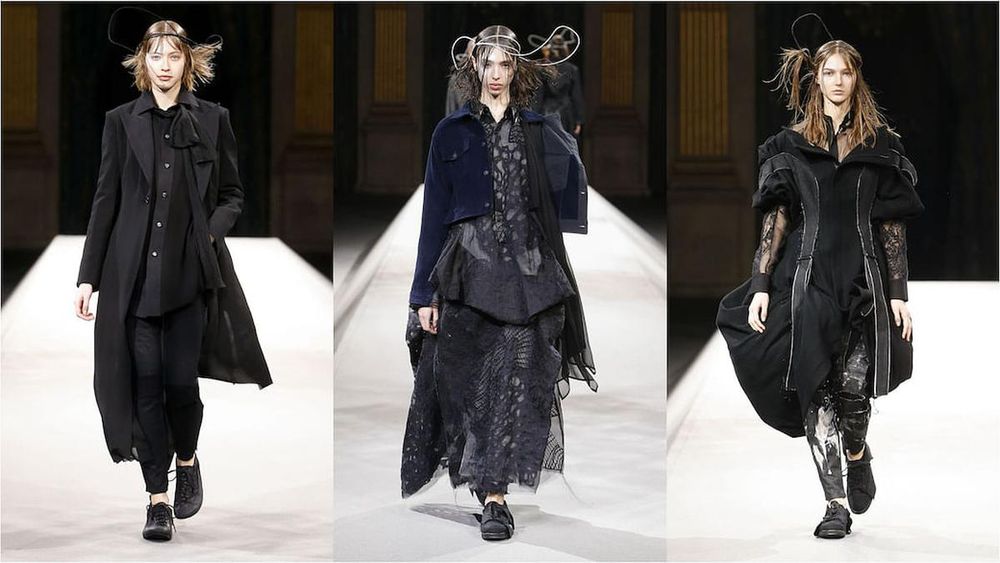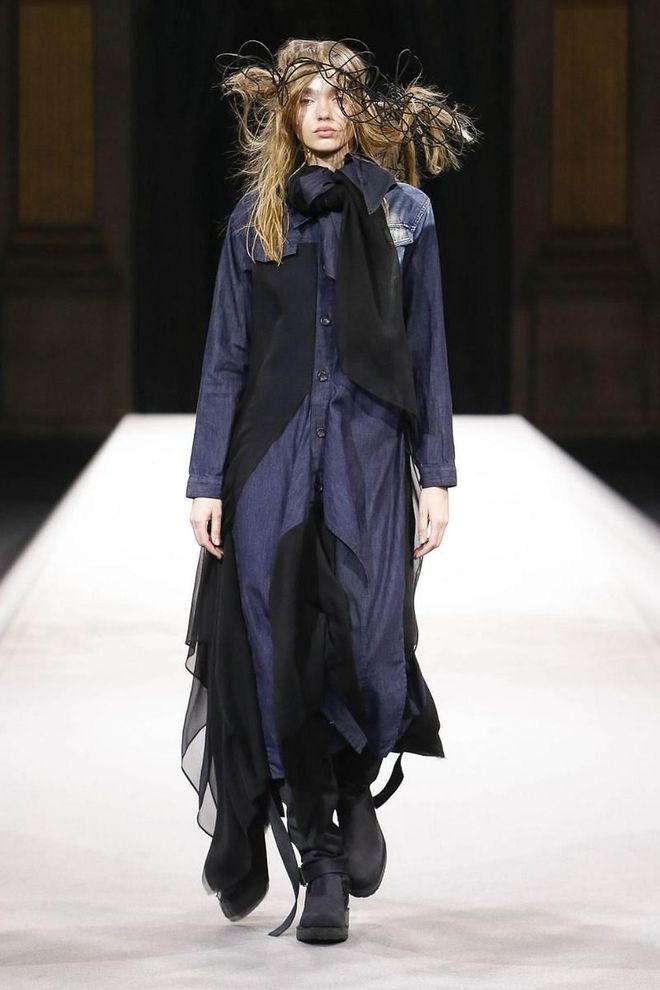Review Of Yohji Yamamoto's Fall/Winter 2022 Collection
Yohji Yamamoto is the classic example of a designer who caters to a customer outside this fashion bubble.

The fashion world has a short attention span, but when the spotlight is on a designer (or a photographer, a stylist, or model), no light shines hotter or brighter. And perhaps because that sphere is a place of great obsession, there is only room for a few at a time. That means the same handful of brands are generally driving all conversation. Shows are rarely divisive anymore, and the designers everyone seems to be talking about at any given time are almost always working with the same key palette of ideas. It can be tough to remember that, outside of the fashion world (and even within it), there are brands who aren’t dressing all the right celebrities and churning out it-bags with fans and followers.

Photo: Monica Feudi
Related article: Review of Loewe’s Fall/Winter 2022 Collection
Yohji Yamamoto, of course, is the classic example of a designer who caters to a customer outside this fashion bubble. In the 1990s and early 2000s, he was one of those spotlight stars, but even then, his clothing, which can be complicated and demanding for the wearer, had cult appeal. And most designers, even peers like Rei Kawakubo and Miuccia Prada have seized onto the digital world and even created clothes that correspond with it. But at Yamamoto’s show on Friday, I realized how special it is that no one else shows like Yamamoto anymore (if they ever did to begin with). I only started attending fashion shows in the 2010s, when most collections were already streamlined for maximum social media impact, but Yamamoto has floated blithely above all that. His shows are still intense, langrous narratives of fabrics and shapes, which require and reward patience, relaxation, and quiet attention.
A Yamamoto show is a cinematic experience of technical finesse. The collection opened with rigid, crisp denim jackets over shimmering silks and wools, then grew into watery silk-wools, and progressed into larger and more bulbous shapes that wobbled and jiggled. The looks and fabrics became more complex, more sophisticated, evolving into swathy expanses of bundled and draped silks and patchworked Jeanne Lanvin-ish laces– “it’s vintage!” Yamamoto joked to me backstage–some worn with gently fitted wool jackets with soaring lapels and asymmetrical double vents on the back. In the middle, there were big, gown-length jackets–classic Yamamoto, and as the greatest living master of slicing and dicing fabric, he is welcome to showboat–that were stunning manipulations of thick wool into large crested shoulders and the swooping 1930s collar of a screen siren. A few minutes later, a model walked up the raised platform runway looking as if she were wearing a 1930s Marlene Dietrich fur coat, with giant bell sleeves, but the piece was in fact a big puffer. The final two looks were enormous yarn sculptures, with umbrella-shaped hats sprouting long, flowing pieces of yarn like jellyfish tentacles floating over big knit sweaters and bulging, bouncy bloomers. Yamamoto took his bow with his two jellyfish, then gently pushed them down the runway, like a father asking his strange little children to run free.
Related article: The Best Looks From CELINE HOMME Fall/Winter 2022

Photo: Monica Feudi
Related article: Should Fashion Be Escapist?
Backstage, Yamamoto was smiling and playful. I asked why he wanted to incorporate so much movement, especially bouncing, in his clothing. “We need it now,” he said. “The world is feeling very down because of COVID-19 and the war. Many sad things. So I just wanted to make people happy,” he added, jotting out the last three words like an incantation.
Yamamoto is already seeing a resurgence in the menswear world, where his bomber jackets with pinup girl images and classic outerwear sell for thousands of dollars on sites from 1st Dibs to Instagram dealers like Constant Practice. His women’s clothing is maybe too mystifying to speak to the younger generation propelling the archival fashion movement in womenswear–like wine, jazz, or baths without bubbles, it’s best appreciated by adults, at least in today’s world. Plus, it requires a certain forbearance of its wearer–you don’t put on Yamamoto to be gawked at, the way you might be with Comme des Garcons, but rather to feel at once powerful and hidden, in control and imperiously elegant. Women’s fashion, even the more avant-garde stuff, has prized wearability and comfort over the past five years, as politics and lifestyle changes have demanded more straightforward clothes. But interestingly, Yamamoto has been one of the week’s biggest muses–Yamamoto-inspired fabric plays were clearly on the moodboard for The Row and Rick Owens, and I picked up his frisky attitude at Loewe and Kiko Kostadinov’s womenswear shows. That suggests women may be ready to approach getting dressed as a complex dalliance between fabric, body, and identity. I don’t know if that will ever catch on at a grand scale, but it probably shouldn’t; it would be good for a little cult feeling in fashion to be, well, cultivated. Fashion would do well to be more atomized, more peppered with personal tastes and obsessions rather than dominated by the chase to support the same few ideas.
This article originally appeared in Harper's BAZAAR US